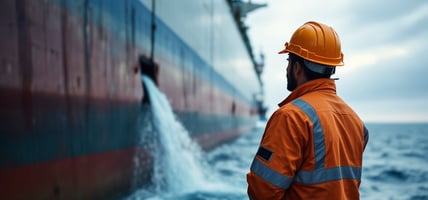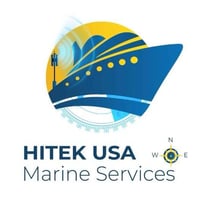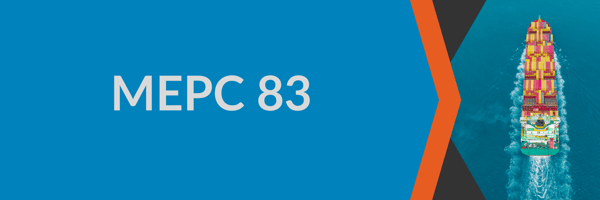The Challenge of Human Error
From Reactive to Predictive Maintenance: How Oil Condition Monitoring System
The Hidden Cost of Reactive Maintenance
Many organisations still operate under reactive maintenance strategies—waiting for equipment to fail before taking action. This approach can be financially and operationally devastating. Research facts demonstrate that businesses switching to planned maintenance, can save up to 30% in maintenance costs. Predictive maintenance can reduce overall maintenance costs by 18-25% and unplanned downtime by up to 50%.
The Strategic Shift to Condition-Based Monitoring
The marine industry has traditionally relied on planned (preventative) maintenance or reactive fixes when something breaks. But in an industry where downtime is expensive, there's a growing shift towards Condition-Based Monitoring (CBM).
Condition Monitoring (CM) is the collection of real-time data on equipment health, enabling action only when required. It's based on actual wear, contamination or anomalies. CBM uses condition monitoring data to make informed maintenance decisions, shifting from time-based routines to performance-based intervention. This strategy reduces downtime and costs.
The Critical Role of Water-in-Oil Monitoring
One of the earliest and most critical indicators of equipment issues is the presence of water in lubricating oil. Even low levels of water can cause corrosion, reduce lubrication performance, and lead to component damage. Oil's saturation point varies depending on temperature, composition, and age. Once the saturation point is exceeded, water becomes free within the oil and can be highly damaging.
The problem with routine tests is that they often detect water after it has become free or emulsified—this is too late for proactive maintenance. This is where oil condition monitoring systems play a valuable role.
Oil Condition Monitoring Systems: Your Gateway to Predictive Maintenance Excellence
The Rivertrace Smart WiO Sensor is an oil condition monitoring sensor that offers a simple, continuous, and accurate method to detect early water presence in lubricating oils, whether on a cargo ship, offshore support vessel or oil platform. This precision-engineered technology provides the real-time data essential for predictive maintenance strategies.
Key Features and Benefits of oil condition monitoring sensors
The Smart WiO Sensor delivers several critical advantages:
- Measures dissolved water, not just free or emulsified water
- Real-time data output for proactive decision-making
- Early warning system to avoid equipment damage and failure
- Compatible with a range of oil types (mineral/synthetic)
- Easily installed inline with minimal disruption
The benefits are substantial: preventing unplanned downtime by detecting water contamination early, protecting engines, gearboxes, and hydraulic systems from damage, assisting with OEM data requirements, reducing reliance on manual sampling and testing kits, and supporting Condition-Based Maintenance programmes.
Critical Applications Across Industries
Built with harsh environment capability, an oil condition monitoring system that includes the Smart WiO sensor, maintains accuracy across demanding industrial conditions. Examples of these include power-generation facilities and oil-transformers, hydraulic systems in industrial applications, heavy duty applications where reliability is paramount and marine and offshore environments where maintenance access is limited.
In marine applications specifically, the sensor is ideal for main engines and generators to detect coolant leaks and fuel ingress early. It’s also ideal for:
- Gearboxes and thrusters to monitor seal integrity and lubrication reliability
- Hydraulic systems to avoid corrosion and failure of sensitive control systems
- High-spec vessels or rigs with CBM strategies to integrate into condition monitoring dashboards for full visibility
Building Your Predictive Maintenance Strategy
- Assess Current Practices
Evaluate your existing reactive maintenance approach. Identify critical assets where water contamination monitoring could prevent costly failures.
- Implement Smart Monitoring
Deploy Smart WiO sensors on critical equipment. The sensor integrates seamlessly with onboard SCADA, PMS or fleet-wide condition monitoring platforms, supporting real-time data visibility and aligning with fleet-wide operational performance monitoring strategies.
- Develop Predictive Capabilities
Use continuous monitoring data to establish baseline performance and identify degradation patterns. The sensor delivers highly accurate measurements of water saturation in oil, allowing ship engineers and technical managers to make data-led decisions.
Measuring Success
The transition to predictive maintenance using Smart WiO technology represents a strategic investment in operational excellence. Monitor these critical metrics:
- reduction in unplanned downtime – expect up to 50%
- maintenance cost reduction – expect 18-25%
- Enhanced equipment reliability and productivity
- Improved energy efficiency and lower operational costs
Early identification of water contamination prevents catastrophic failures in engines and hydraulic systems. By using the Smart WiO as part of an oil condition monitor system, ship operators reduce unscheduled maintenance and extend the life of equipment.
Future-Proof Technology Integration
The Smart WiO sensor integrates seamlessly with existing monitoring systems, providing a pathway for gradual transition to comprehensive predictive maintenance programmes. The sensor's robust construction withstands salt spray, vibration, pressure changes, and extreme temperatures commonly experienced at sea, engineered specifically for marine and offshore applications—from engine rooms to topside and subsea installations.
Conclusion: Your Path to Maintenance Excellence
By detecting water contamination before equipment failure, organisations achieve significant cost reductions whilst improving reliability. The Smart WiO sensor provides the foundation for this transformation, offering precision-engineered monitoring with harsh environment capability for critical industrial applications.
Ready to begin your journey from reactive to predictive maintenance? Contact our team to discover how Smart WiO technology can transform your operational efficiency. For detailed technical specifications, visit rivertrace.com or speak with our predictive maintenance advisors.



